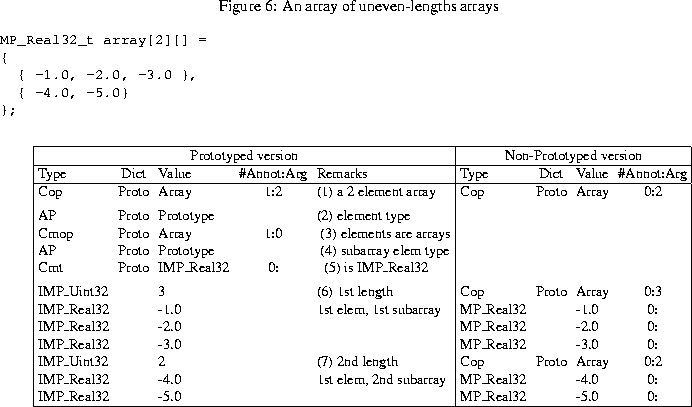


Next: 3.2.2.3 Example 3: pointer
Up: 3.2.2 Meta Operator TypeSpecs
Previous: 3.2.2.1 Example 1: prototyped
As a second example, let us suppose that the subarrays in the example
above have different lengths, say one has length 2 and one has length
3.
In this case we need to use a meta operator node packet with 0 in
the number-of-arguments field as shown in figure 6.
Figure 6:
An array of uneven-lengths arrays
 |
As in the first example, the prototype (lines 2 - 5) specifies
that each element of the top-level array is again an array of
IMP_Real32's. However, the 0 in the number-of-arguments field of the
meta operator in line 3 specifies that the actual number of elements
of the subarrays is not given at prototype specification time but is
instead given at data communication time by an IMP_Uint32 data
limb in the place where the operator would have appeared (lines
6 and 7).



Next: 3.2.2.3 Example 3: pointer
Up: 3.2.2 Meta Operator TypeSpecs
Previous: 3.2.2.1 Example 1: prototyped
| ZCA Home |
Reports |
